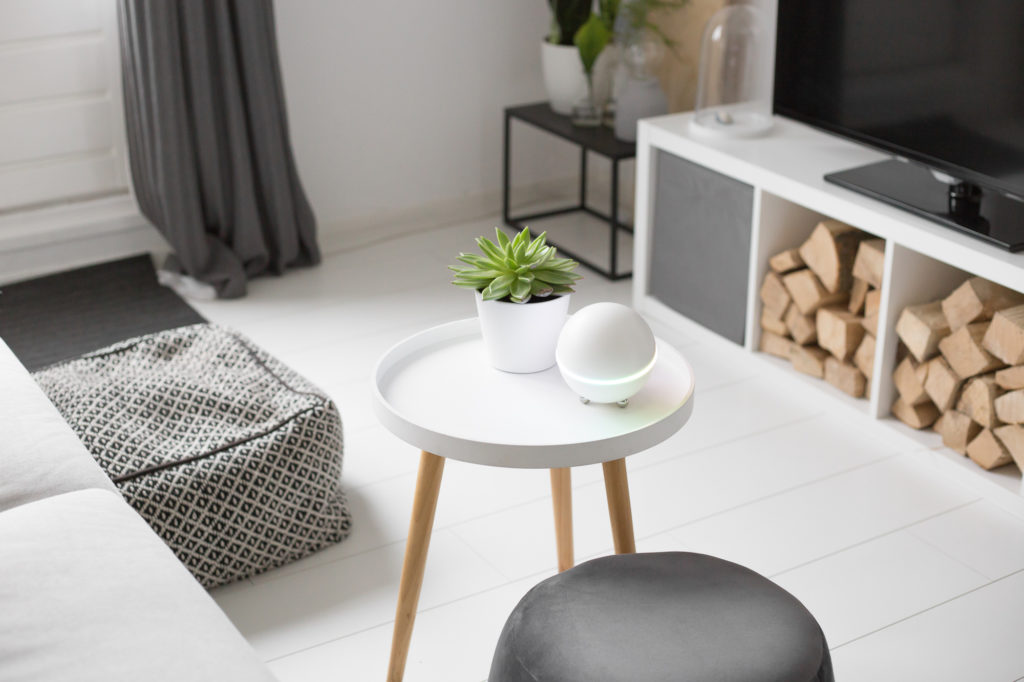
Homey vs. Animus Heart - Smart home system comparison
Choosing your smart home system is the most important decision in your smart home. As the heart of your setup, it determines what you can and cannot do. It also provides the interface for your home. The systems’ compatibility determines what you can and cannot add in the future. Needless to say, you want to choose right.
Homey and Animus Heart are both smart home systems available in Europe: Animus in Scandinavia, and Homey across the EU. But how do they compare? Let’s find out.

Summary
This is a summary of how the two systems stack up. For a more in-depth view, please read on.
| Homey | Animus Heart | |
|---|---|---|
| Supported devices | 50,000 | ‘Thousands’ |
| Supported technologies | ||
| Z-Wave Plus | ✔️ | ✔️ |
| Zigbee | ✔️ | ❌ |
| Wi-Fi | ✔️ | ✔️ |
| Bluetooth Low Energy | ✔️ | ✔️ |
| 868 MHz | ✔️ | ❌ |
| 433 MHz - Nexa / Telldus | ✔️ | ✔️ |
| 433MHz - Somfy | ✔️ | ❌ |
| Infrared | ✔️ | ❌ |
| KNX-IP | ✔️ | ❌ |
| Voice assistants | ✔️ | ✔️ |
| Data graphs / Historical log | ✔️ | ❌ |
| Mobile App | Simple + Advanced | Simple |
| Privacy-aware | ✔️ | ✔️ |
| Automation | Powerful | Limited |
| Energy management | ✔️ | ❌ |
| Price | € 299 | € 165 |
| Platform | Open app platform | Closed |
| Software status | Mature, fast development | Less mature, mediocre development |

Compatibility and versatility
Let’s start with the most important aspect: compatibility. The connectivity and device support of the system determines what you can and cannot link. After all, you choose a smart home system to manage your whole house – not just 75%. Connectivity also influences the future: how much freedom do you have when you want to buy new devices?
The comparison between Homey and Animus Home here is easy: where Animus features four wireless technologies, Homey supports seven. Homey adds Zigbee, 868MHz and Infrared to the technologies both systems support. On a technology like Wi-Fi or 433MHz, Homey also supports more products. Examples include full support for Sonos and Spotify Connect speakers, an integration with KNX-IP or support for Somfy blinds.
Infrared and Zigbee are very interesting here: more and more attractive, affordable products come with Zigbee nowadays. Take IKEA lightbulbs for example, or Xiaomi Aqara sensors. With Homey, you can directly add these to your smart home. Just like your TV and stereo, which use infrared.
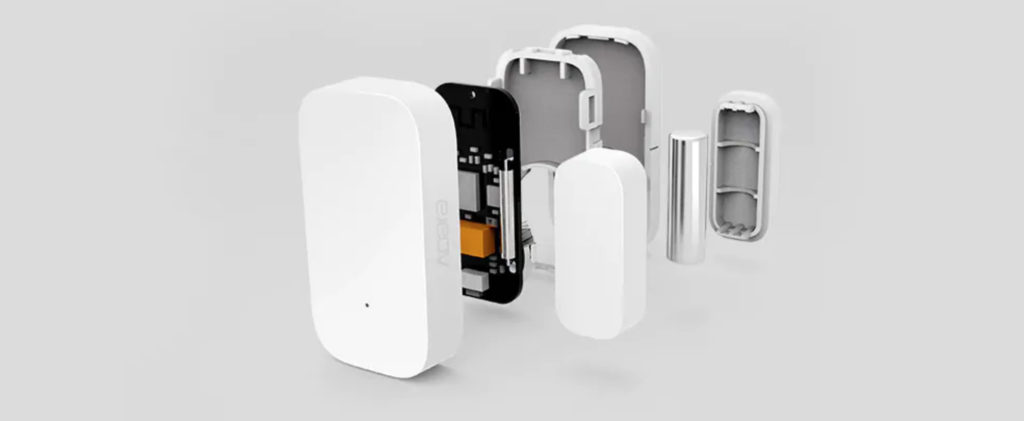
Interfaces, Apps and voice assistants
Both Homey and Animus Heart feature a mobile app, a web-app for automation, and integrations with voice assistants like Alexa, Google Assistant and HomeKit/Siri. The Animus system does not allow you to view historical graphs or data about your home, like Homey Insights does. The main difference between the two systems can be found in the mobile app, which is the primary interface for both.
In short, the Homey app is more extended and mature than Animus’s. For instance, it features advanced automation with Homey Flow vs. basic automation on Animus (more on automation later). It also features settings, network management, user invitation, energy overview and management and many more features not found in the Animus app. At the same time, it’s at least equally easy to use. The more powerful features are positioned well and can be disabled for users by inviting them on a ‘user’ or ‘guest’ level.
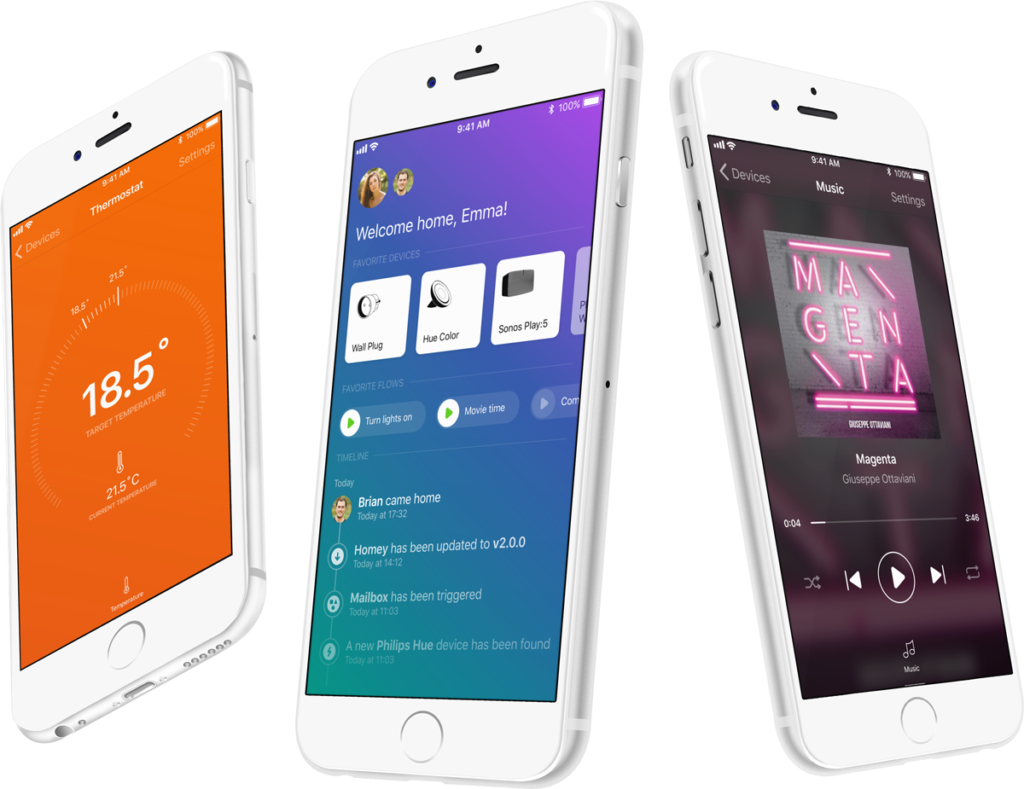
Privacy
Both systems are designed privacy-first. They don’t sell your data, don’t do profiling and fully comply with EU GDPR. In this regard there is no significant difference.
Visual appearance
This one is heavily subjective, so you’ll have to choose for yourself:
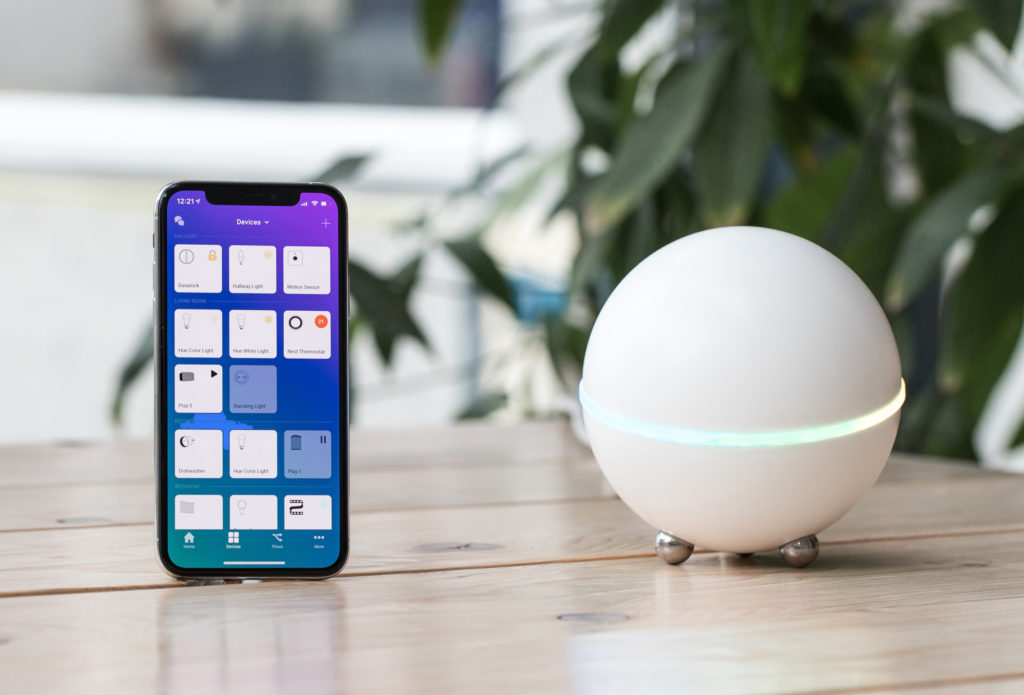
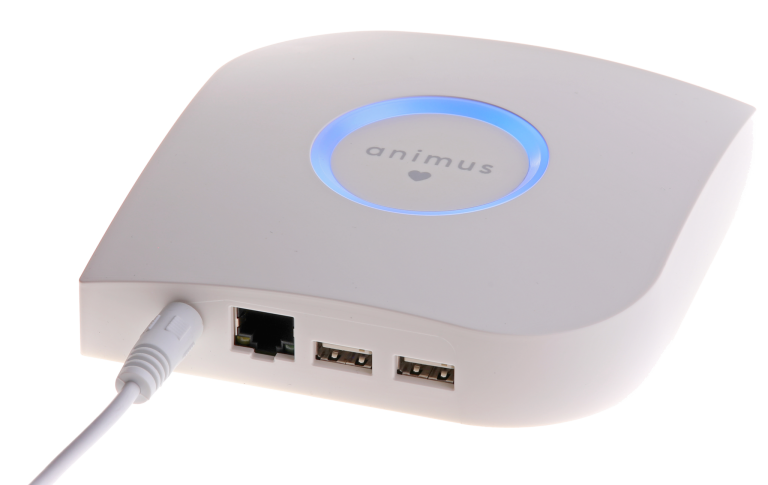
The one thing that can be said is that Homey is designed more for the living room, and Animus less. Of course, Homey can also be put out of sight, but it has some interesting physical features:
- It looks cool and lets you talk about your smart home system to friends
- It has infrared, which requires a line-of-sight with you TV and/or stereo to work best
- It has a 3,5mm jack output which you can use for soundboard sounds to a stereo
- Its LED ring can be used in Flows: it can light up in different colors on scenarios. It can even be used with a ‘weather’ screensaver to depict current weather.
Automation
One of the core functions, next to device compatibility is automation. Both Homey and Animus Home feature automation engines that can be used both in the mobile app and via a web interface. Both systems also have features like timers, sunrise/sunset and push notifications.
The difference becomes clear in more advanced automations: Where Animus features if… and… then… automation, Homey features if… and../or.. then../else… Homey also has support for something it calls ‘tags and logic’, which is basically variables and calculation. Even user management (like enabling and disabling the account of your cleaning lady) can be automated in Homey Flows. It’s simply a more powerful environment.

Price
Nothing comes for free, and price is always a factor when choosing products – smart home and non-smart-home. Comparing the price is pretty easy: Homey costs 299 EUR, Animus Heart 165 EUR. That’s a significant price-difference, although the difference is less when you see it in context of your whole Smart Home. Especially since better-priced Zigbee devices are not available on Animus. The question is: is saving 134 euro on the heart of your smart home worth the trade-offs?
Platform, maturity and development
When you invest in a system, you want to use it for the years to come. When it comes to platform structure and future development, there is one big difference between Homey and Animus Home: Homey is built as an open platform, while Animus is closed.
The open platform of Homey works like a smartphone: all integrations with devices and brands are separate apps. These apps can be individually made, installed and updated. And they can be made by anyone and distributed through the Homey App store.
This means that with Homey, there is a developer community adding in support for new devices and services – including some cool stuff that would probably never make it in a closed system. For future integrations, you’re not solely dependent on the team behind Homey, while the system itself is also already more mature and the Homey team is still actively developing new features and integrations.
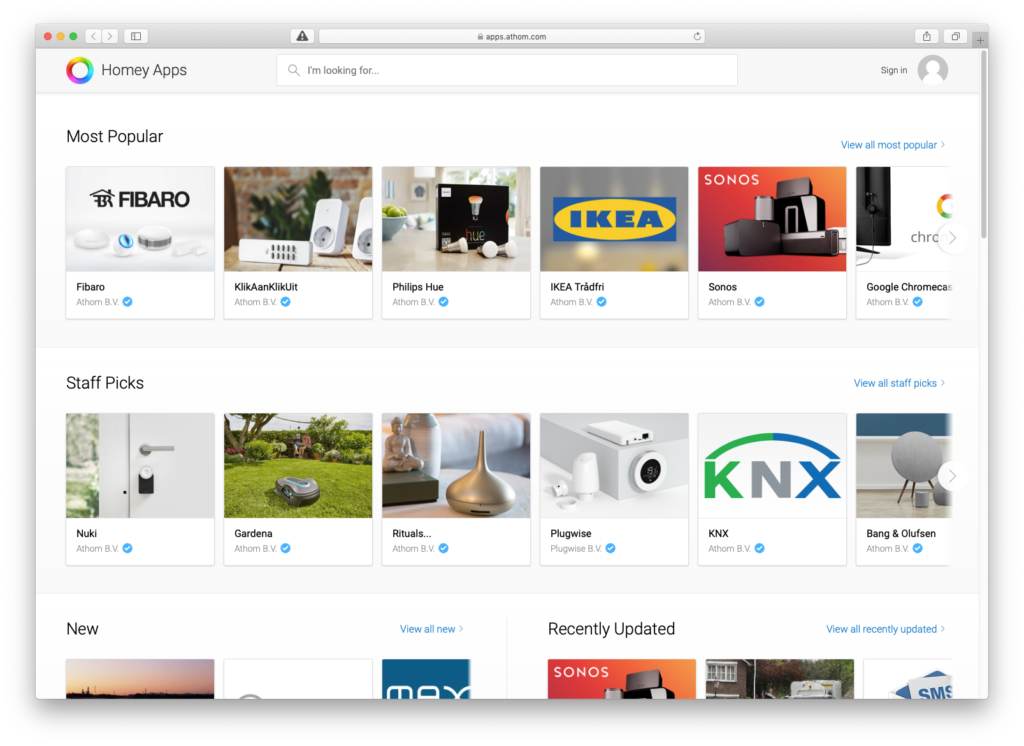
Homey vs. Animus - Conclusion
There’s something to be said for both systems. The Animus Heart's main advantage is that it’s 134 Euro cheaper. On the other hand, Homey is a more mature, powerful, versatile and open system than Animus Home.
Homey features some core connectivity like Zigbee and infrared that Animus doesn't. And even on the same supported technologies Homey boasts more extended device support and better interfaces for it. Homey Flow is a more powerful automation engine than Animus has, and with Homey Insights and Homey Energy it's way easier to get a good insight in your home. Homey's open platform with developer community definitely is a more future-proof play.
The system you choose is the heart of your smart home. So the question is how much you are willing to sacrifice for some savings. We would invite you to unleash the future, and start your home on the right basis.







